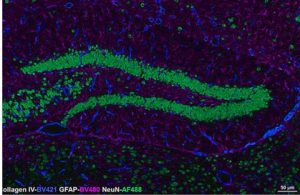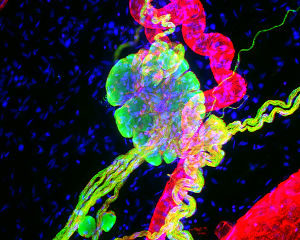
Secondary antibodies for the win!!!
Using our products?
About to publish?
Like to share your images with us?

Let us know!
There are three ways in which you can share how you use our products with us.
- Cite us! We know how important citations are for antibody users, which is why we partner with CiteAb. Read their instructions on how to cite the antibodies you use @ www.citeab.com/citing-an-antibody. Then send your PubMed ID and details to cuserv@jireurope and we’ll enter you into the draw.
- Share your images! Do you have some amazing data you’d like to share with us? An IP that’s worked particularly well? Complex IF images? Multi-color flow? Hashtag #jacksonimmuno on either Instagram or Twitter with your image and details of the antibodies you used and we’ll enter you into the draw.
- Write a review! Are your particularly impressed with how our secondary antibodies worked in your experiment? Write review at www.selectscience.net/review-antibodyon how you use our Secondary antibodies, drop us an email and we’ll enter you into a draw to win an iPad.
Or just email marketing@jacksonimmuno.com with your details and we’ll enter you into a draw to win an iPad mini.
Some examples of how our customers have used our products:

Figure 1: Triple immunofluorescent labeling of mouse hippocampus, stained with Rabbit IgG anti-Collagen IV (blood vessels) followed by Donkey anti-Rabbit IgG-BV421, Mouse IgG1 anti-GFAP (astrocytes) followed by Goat anti-Mouse IgG1-BV480, and Chicken IgY anti-NeuN (neurons) followed by Goat anti-Chicken IgY-Alexa Fluor 488. Dragan Maric NINDS NIH Bethesda, Maryland.

Figure 2: Nerve cell bodies and fibers labeled with rabbit anti-PGP + Donkey anti-Rabbit-Cy3 (711-225-152 green), vascular basement membranes labeled with collagen IV + Donkey anti-Mouse-Cy2 (715-225-150 red) and DAPI-labeled DNA (blue) in jejunum submucosal ganglion.
Brian McAdams and William Kennedy, University of Minnesota.
Terms and conditions:
- Only one entry per person is allowed. No purchase is necessary to enter.
- Entrants must be engaged in scientific research. Private addresses will be invalid; Company or institute name must be provided.
- You must be aged 18 or over to enter.
- Employees of Jackson ImmunoResearch, or any associated business or organization or their close relatives are not eligible to enter.
- Only one winner will be drawn at random before the 20th of December 2020 and notified via details provided. If no response is made within a reasonable time, the prize may be withdrawn and a new winner selected.
- The winner will receive an iPad. No cash alternative will be offered.
- By entering the competition you agree that Jackson ImmunoResearch can store and use the contact details provided. This information will not be shared with any third parties.
- Jackson ImmunoResearch reserves the right to cancel this promotion at any time


